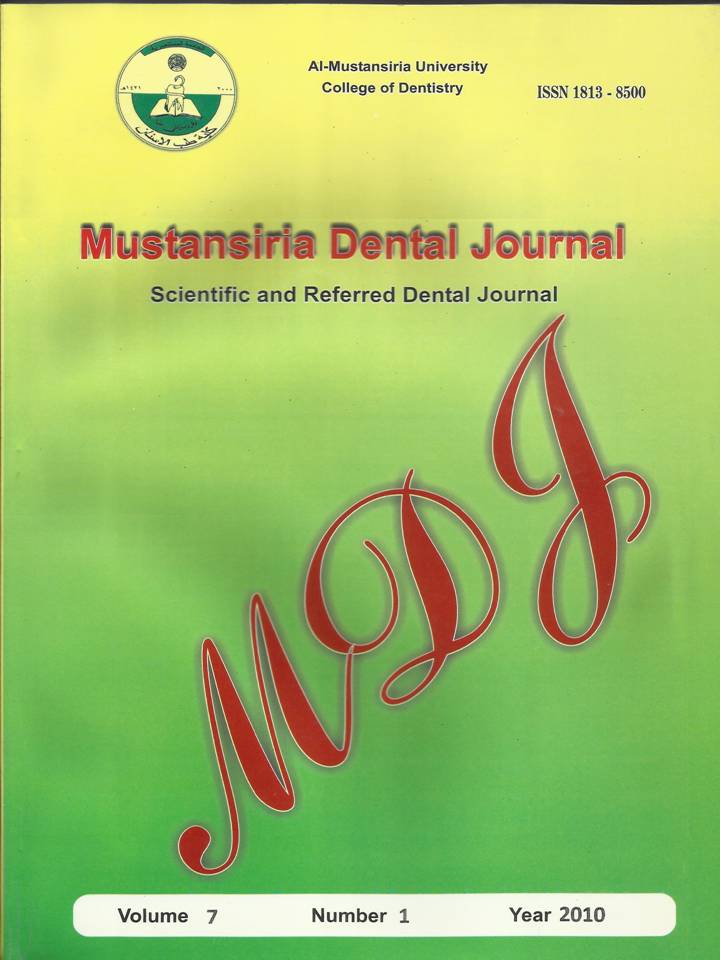Traumatic dental injuries of the permanent incisors and its relation to malocclusion in patients attending the pedodontic clinic in College of Dentistry, Baghdad University
DOI:
https://doi.org/10.32828/mdj.v7i1.370Abstract
Dental trauma is a public health problem in young aged patients. The aim of this
study was to investigate the percentage and severity of dental trauma and
malocclusion and their correlation, as well as analyze the general risk factors like the
effect of age, gender, causes of the trauma and malocclusion in anterior permanent
teeth.
The sample of the present study include patients who came to the Pedodontic
clinic in the Pedodontic and Preventive department at the College of
Dentistry/Baghdad University seeking treatment of traumatized anterior permanent
teeth. The traumatized teeth were examined clinically (according to Garcia-Gody
classification) and radiographically. Types of occlusion was determined according to
Angle’s classification, while the over jet and overbite were recorded according to the
coding criteria described by Kinnan’s study.
In all age groups, the most frequent cause of trauma was found to be falls (61.4%).
Enamel and dentin fracture was the most frequently seen type of injury(38.6%) in
which upper central incisors were the most affected teeth from dental
trauma(47.7%).Regarding malocclusion, patients with class II malocclusion represent
(71.9%) from the total sample, while those with increased over jet (26.3%) in which
(66.7) of them seek treatment for two fractured teeth. However, the number of injured
teeth per child was 1.54. Increased overbite was correlated with more sever type of
dental trauma.
There is a relationship between malocclusion and fractured anterior teeth in which
malocclusion will increase the number of fractured teeth as well as the severity of
dental trauma
Downloads
Published
Issue
Section
License
The Journal of Mustansiria Dental Journal is an open-access journal that all contents are free of charge. Articles of this journal are licensed under the terms of the Creative Commons Attribution International Public License CC-BY 4.0 (https://creativecommons.org/licenses/by/4.0/legalcode) that licensees are unrestrictly allowed to search, download, share, distribute, print, or link to the full texts of the articles, crawl them for indexing and reproduce any medium of the articles provided that they give the author(s) proper credits (citation). The journal allows the author(s) to retain the copyright of their published article.
Creative Commons-Attribution (BY)









